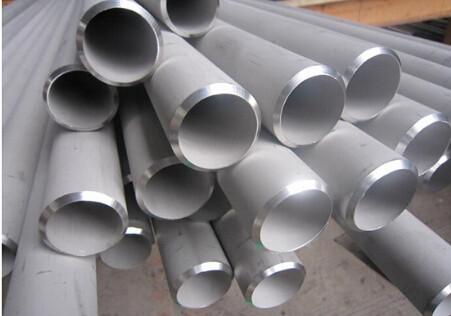ASTM A312 TP316L Stainless Steel Seamless Pipes Specification Type 316L is the low carbon version of 316 stainless. With the addition of molybdenum, the steel is popular for use in severe corrosion environments due to the materials immunity from boundary carbide precipitation (sensitisation). The material is widely used in heavy gauge welded components and weld annealing is only required where the material is for use in high stress environments. 316L has an extensive variety of uses especially in marine applications due to the materials high corrosion resistance. Benefits of using Type 316L Stainless Steel Low carbon content eliminates carbon precipitation in the welding process Can be used in severe corrosive environments Improved anti-corrosion scope due to added Molybdenum Weld annealing only required in high stress applications Very similar to Grade 316 in chemical composition and mechanical properties 316 & 316L steel plate and pipes have common properties and are often stocked with Dual Certification, where it is determined that both have properties and composition which comply with both steel types. Type 316H is excluded from this scenario by virtue of the fact that unlike 316 & 316L, 316H is engineered to work in elevated working temperatures.
Product Range Specifications: ASTM A/ASME SA213/A249/A269/A312/A358 CL. I to V ASTM A789/A790 Sizes (Seamless): 1/2″ NB – 24″ NB Sizes (ERW): 1/2″ NB – 24″ NB Sizes (EFW): 6″ NB – 100″ NB Wall Thickness available: Schedule 5S – Schedule XXS (heavier on request) Other Materials Testing: NACE MR0175, H2 SERVICE, OXYGEN SERVICE, CRYO SERVICE, etc. Dimensions: All Pipes is manufactured and inspected/tested to the relevant standards including ASTM, ASME and API etc. Background of 316L Stainless Steel Pipes and Tubes Grade 316 is the standard molybdenum-bearing grade, second in importance to 304 amongst the austenitic stainless steels. The molybdenum gives 316 better overall corrosion resistant properties than Grade 304, particularly higher resistance to pitting and crevice corrosion in chloride environments. It has excellent forming and welding characteristics. It is readily brake or roll formed into a variety of parts for applications in the industrial, architectural, and transportation fields. Grade 316 also has outstanding welding characteristics. Post-weld annealing is not required when welding thin sections. Grade 316L, the low carbon version of 316 and is immune from sensitisation (grain boundary carbide precipitation). Thus it is extensively used in heavy gauge welded components (over about 6mm). Grade 316H, with its higher carbon content has application at elevated temperatures, as does stabilised grade 316Ti.








